Stay at home and prepare these Kondattams this summer season
Now it is Corona time, and everyone are locked at home. No way to go out, but the best way to isolate oneself from society to avoid the spread of epidemic. So a lot of free time also, especially the working mothers who stay away from office now, because of 21 days of lock. Now it is hot summer in Kerala, best season to make Kondattam and similar condiments that can be prepared now and stored for next monsoon and coming seasons. If you are already bored and have a plenty of time you can try with these Kondattam and similar dishes.
It’s the best time to make pickles and kondattams, for future days as no one can predict when this lock time is to end. Though essentials are now sufficient we can’t predict future, and as it is holiday for most of us, make use of this situation and prepare a few dishes for future. It’s the best time to dry ingredients, powder and also dry fry them as it’s hot summer all over Kerala. With some of the common things available, we can make countless tasty dishes.
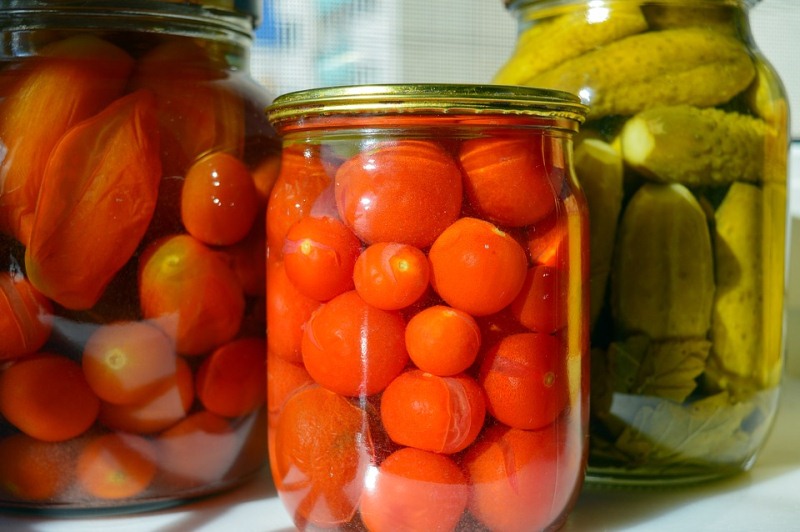
Bring those grandma tastes back
There was a time when our grandmas used to prepare pickles and kondattams at home, using ingredients available from courtyard. When the time has slowly drifted towards the era of working mothers, no one have enough time to make such traditional and delicious dishes. Now you have opportunity to rewind those days, and take tips from grandmas to prepare traditional condiments at home. It’s so cheap and excellent in quality too, if we make condiments and pickles at home. In fact many of such traditional dishes are not available at market too. We can also keep those preservatives away, and add salt as much as we want only.
You need not hesitate thinking these are grandma dishes, and feel lazy. In the courtyard we have jackfruit and mangoes this season, and excess of these fruits are wasted too. If you are willing to spend a little bit time, we can prepare several delicious condiments from these, without visiting supermarkets and paying high.
Dry fried or parched items (Varattiyath) can be prepared at home this season
Almost all fruits are seasonal, and what to do if we want to taste jackfruit after ‘jackfruit season’ ends? There was a time when Chakka Varattiyath (dry fried jackfruit) was stored in Bharani (containers) and stored in storehouses or granary (pathaayam). If Chakka Varattiyath is prepared well and stored in traditional Bharani jars, they stay fresh for minimum 2 years without any damage.
When you prepare Chakka Varattiyath, it should not stick to fingers. Cook jackfruit for a long time till it reaches this stage. Take a little quantity to check if jackfruit sticks to your hands, and keep frying till jackfruit is well cooked. Then only you can store it for long days. It takes a lot of effort to prepare, but it is best if you prepare at home. Use a traditional thick bottomed urli for this purpose. Then only jackfruit won’t stick to the bottom. Add sufficient ghee and jaggery to jackfruit and keep stirring.
You can also prepare such parched (Varattu) desserts with small types of fruits, Kerala big sized banana etc. Before you store it in Bharani jars, wash them well and dry under direct sun. You can also prepare variety Unniyappam, Kumbilappam, Payasam etc using these desserts stored in containers.
Jam – Another version of dry fried fruits
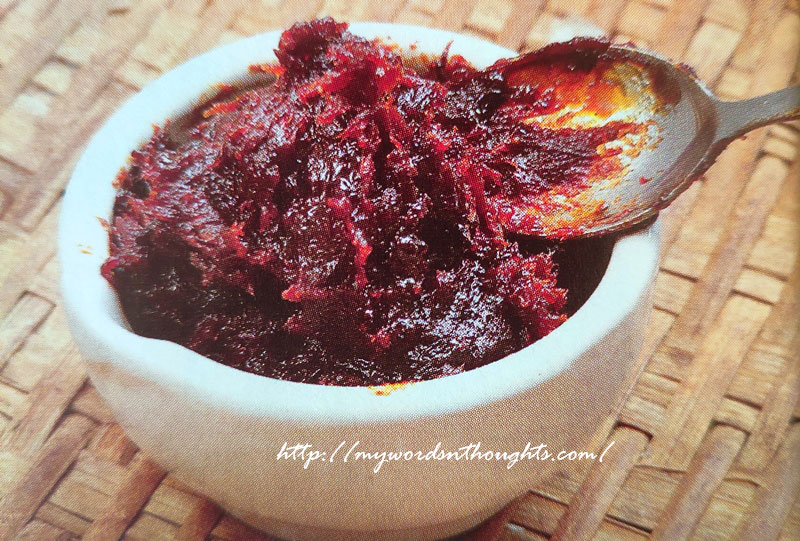
Apart from fruits you can also prepare jam using tomatoes from kitchen garden. Steam cook tomatoes for 5 minutes. Put them in cold water and peel off the skin. Smash it well and add equal quantity of sugar and a little citric acid. Dry fry it till water content is fully absorbed and thus you can prepare homemade tomato sauce. You can prepare similar fruit jams using pineapple, papaya, mango, apple, bilimbi, Indian coffee plum (lovlolika), rose apple (champakka), sapodilla, stem of nutmeg etc. Cut them into small pieces and add sufficient sugar, and then add a little citric acid when it is almost done. Store jams in dry glass containers.
Gooseberry Varattiyath
Remove seed of gooseberries and crush them. Transfer them to a cotton cloth and squeeze juice. Add a little sugar or honey to prepare gooseberry juice. You can also add a little salt and green chillies to prepare a drink similar to buttermilk. Sauté the remaining pulp adding salt and ghee in low flame till it starts separating from the edges of pan. When it cools store in dry glass containers. It’s good for children. You can also prepare the same dish using green mangoes. Choose mangoes that are not too sour.
Kerala’s own jackfruit for delicious dishes
Remove seeds from raw jack fruit and dry under direct sun. Continue drying for a few days till the pieces turn brittle. Powder it and store in air-tight containers. You can add a little quantity of this powder while preparing dosa, idli, steam cake or desserts as per your preference, to bring a twist to dishes. Such dishes are excellent for diabetic patients.
You can dry jackfruit seeds also and powder it, and store it similar way. Add a little of this powder while preparing chapatti, steam cake, dosa, idli etc. When you add powder of jackfruit seeds to the batter of dosa or idli, reduce the amount of black gram. After removing the outer skin of jackfruit seeds, never remove the brown coloured skin before drying, as it is highly nutritious. First boil it and then dry under direct sun, before storing it in powdered form.
Healthy payasam for any season
Jackfruit seed powder can be used to prepare delicious and nutritious payasam. First prepare jaggery solution by boiling it with water, and then add ghee and the powder to it in sufficient quantity. Reduce the flame and fry the items. Keep stirring continuously. When the solution separates from the sides of the cooking container, add third extract of coconut milk. When contents thicken, add second extract of coconut milk. When the contents boil well, add cardamom powder followed by first extract of coconut milk and put off the flame. Season your payasam with cashews and raisins fried in ghee. You can use this jackfruit seed payasam as a healthy dessert.
You can also dry tapioca similar way
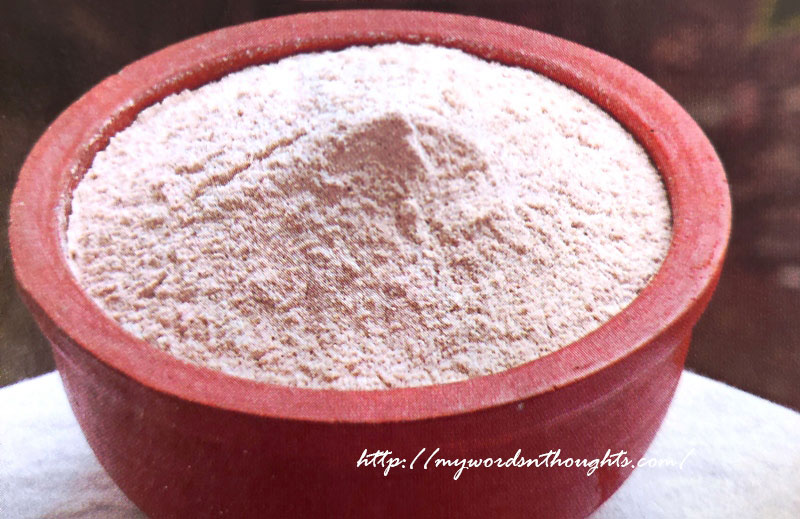
Chop tapioca into small pieces and dry under direct sun for a few days. Make a fine powder and use to it for preparing steam cake. During my childhood days, I have seen my neighbour aunt drying pieces of tapioca in large quantities under direct sun. Then she used to store it for future purposes. She used to cook these dried tapioca pieces occasionally and serve her big family of 6 kids. They usually serve this cooked tapioca alongside rice and fish.
You can also dry raw banana this way and powder it. Use this powder to prepare delicious porridge for small kids below one year old. Small banana is generally used for this purpose. Well-ripen banana or those bananas from fallen plantains can be used, and dishes can be served to both children and senior citizens. Apart from small banana, you can also choose raw plantains of Mysore Poovan, Kunnan Kaaya, Ethakaaya etc. You can also prepare arrowroot powder at home similar way. The container should be free of moisture and dried under direct sun before using. Otherwise arrowroot powder may get fungal attack.
You can also dry breadfruit and store it in powdered form. But use it exactly the same day you pluck it from tree. I shall provide you an easy and delicious evening snack with dry tapioca. Cook tapioca and dry under direct sun. Dry fry it and powder it. Add jaggery and coconut and mix well and prepare this evening snack.
Salted mango is yet another delicious dish
There was a time when even a single tender mango fallen from mango tree never go wasted. That was the scarcity of resources then. Number of family members too was large, and hence mothers of yesterday never wasted even silly resources of the courtyard. Apart from cooking, they used to dry and store easily available items for future days, especially monsoon.
Tender mango pickle and salted tender mango are trademark Kerala dishes. Mangoes with flesh are used for pickles while tender local mangoes are salted and stored in containers. If you prepare salted mango in a traditional way, tender mangoes are put in salted water and stored in bharani containers. They are closed with tight lids and opened only after a year. Raw moovandan mango and half-ripen local mangoes are stored this way adding a little bird’s eye chilli (kanthari). While serving with salted mango alongside boiled rice, squeeze these chillies to get a distinct taste.
Ambazhanga (Hog Plum) and Chathura puli (Averrhoa bilimbi) can also be salted and stored. Remove seeds of raw jackfruit and immerse in salt water. Boil and cool salt water before use. You can store raw jackfruit for one year, if you do so.
It is possible to store raw mango for many years using different procedures. Adamaanga, prepared using dry mango (mango dried under direct sun) can be used to prepare pickles, which won’t get damaged for many years. This pickle is an instant remedy for constipation and loss of appetite. Bilimbi dried and made into a pickle also gives similar results.
Fenugreek-Mango pickle is a tasty condiment. Wash mango first and remove the moisture content completely. Peel off the skin and store it in Bharani containers, along with chilli powder, fenugreek powder and salt. Mix the contents well and close the lid. Also wrap a cloth or banana leaf around the lid to close the lid perfectly. After two days, open the lid and check the taste. If needed to add extra salt or chilli powder, add at this point. Dip a cloth in sesame oil and put on its top to fully cover the ingredients. Close the lid tightly once again and open after 4 months only. You can use the pickle after that.
You can use any leftover vegetable of kitchen to prepare tasty pickles. Store the pickle in refrigerator. Before use, take a little pickle in a container and place it above hot water for some time to bring it to room temperature. If you roast red chillies and then grind it and add a little to pickle, it enhances the taste.
Tender mango pickle locally known as Kanni Maanga and Kadumaanga
To prepare Kanni Maanga, choose sour mangoes only. Locally available mangoes add a traditional taste. If you choose tender mangoes, it tastes super. Never remove the stalk. Wash them well and remove excess moisture content using a towel. Boil some water adding salt and turmeric powder and allow it to cool completely. Add tender mangoes to it and keep it aside for three days. Extract mangoes from salt water and spread on a sheet or plate.
In the remaining salt water, soak red chillies and mustard. Make a fine paste along with a little asafoetida and add mangoes to it. Transfer all the contents to a dry bharani and store for future use.
Maanga Thera and Chakkakkocchi
Long before refrigerators became a part of Kerala household, our ancestors had their own ways to store leftover mango fruits. One of the best methods was maangaathera, also known as Maankaachu. At around 8 am, they used to squeeze the juice and pulp of mango fruits in palm mats. If squeezing is not possible, first skin is removed, and then flesh is cut into pieces and added to the juice. If mat is not available, spathe of aracanut (paala) or sieve can also be used. Place it in sunlight.
At around 4 pm, before ants start coming, cover the mat or sieve using a net and take it inside. Continue the process next day with the available mangoes, and squeeze the pulp on its top. Continue the process for next 1 week. It takes at least 2 weeks for mango pulp to dry completely. You can cut them into small pieces or wrap it like a map and store in air tight bharani (jar) containers. If the mango pulp is dried properly, it won’t damage for next 1 year.
Chakkakkocchi is a traditional method to store jackfruit for a long time. You can use either ground jackfruit or steam cooked & ground jackfruit to prepare this dish. Use a coconut leaf mat for drying purposes. Apply jackfruit paste as a thin layer on mat and dry under direct sun. Dry it perfectly for a few days till water content is fully absorbed. Then only it can be preserved for a long time. You can use this Chakka Kocchi to prepare ada or jackfruit pradhaman. Varikka Chakka (an elite species of jackfruit) is best for this preparation.
Today there are only a few members in almost every family, and it is not easy to consume a jackfruit fully. Leftover jackfruit can be used to make Chakkakkocchi and used in off-season. You can try the same technique for small banana, big sized banana, mango fruit etc.
Chakka Pappadam
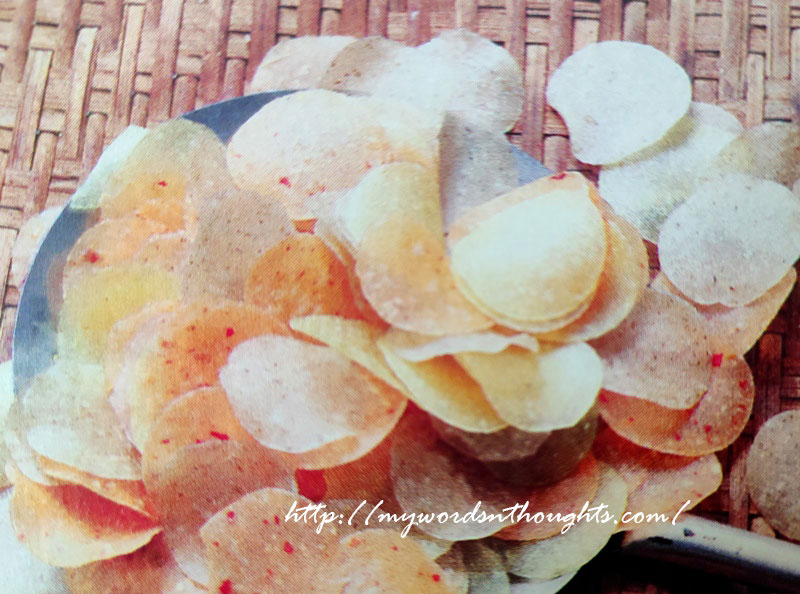
Chop raw jackfruit into pieces and boil it well adding salt, chilli powder and turmeric powder. You can also use whole chillies. Make a smooth paste along with the water used to cook jackfruit. Sprinkle a little sesame seeds or cumin seeds as per your preference and make small balls from this batter. Take a milk cover and open three sides. Apply a little oil on each ball and place inside the cover, close it. Press the ball using hands and spread it. Continue the process for remaining balls.
Spread a cotton cloth on open terrace and spread these pappads. Allow it to dry for at least 1.5 weeks. You can also follow same method to prepare pappads of sweet potato and tapioca.
Kondattam of different types for rice or evening tea
Chakka Puzhukku is easy to prepare from well-ripen jackfruit (not fruit). Clean jackfruit and tear into pieces. Apply salt and steam cook it. Then dry it under direct sun for a few days till moisture content is fully evaporated. It can be used as Kondattam for lunch. Deep fry a few in hot oil and serve alongside rice. You can also serve as 4 O’ clock snack. You can follow the same procedure to prepare Puzhukku of tender jackfruit (Idichakka) or bread fruit. Cut them into small pieces, add salt and steam cook it. Dry it under direct sun and store in air-tight containers. Chop them as thin lengthy pieces. It is easy to cook as well as to fry in hot oil.
Except leafy vegetables, pumpkin and eggplant, you can prepare tasty Kondattam from any vegetable. Chop vegetables into desired pieces. Add excess salt to buttermilk and add the contents to it. Boil the contents once and strain the vegetable pieces from water. Dry them under direct sun. In the evening, put those vegetables once again in the buttermilk. Strain the pieces from butter milk next day morning and dry under direct sun. Continue the process till buttermilk is fully absorbed by vegetable pieces. Then continue drying for a few more days. Read the recipe of curd chilli in detail.
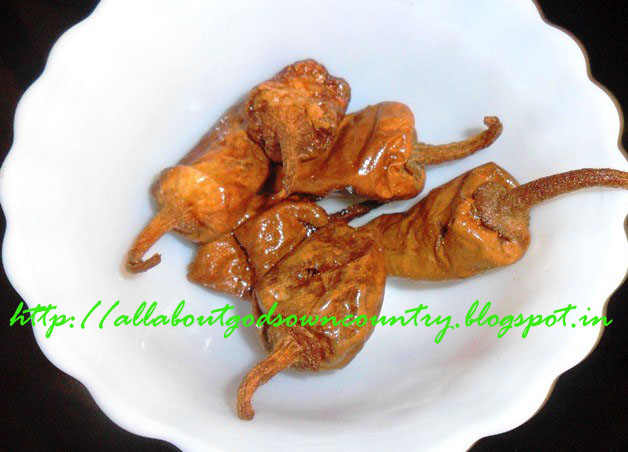
You can prepare such kondattams using bitter gourd, okra, long beans, ivy gourd, white gourd etc, apart from green chillies of different types. Vegetable kondattam won’t taste nice if you don’t boil it once before drying. You can exclude chillies from boiling process. Never remove seeds and skin of long beans, ivy gourd and ash gourd. Add salt and boil once. You can also marinate them using chilli powder and salt and dry under direct sun. during summer you can dry tamarind, pot tamarind, green mango, bilimbi etc and add to your side dishes.
During summer season moringa leaves are available in plenty. It’s said that moringa leaves are unhealthy for monsoon season, and we should never prepare dishes during this season. Remove moringa leaves from stalk and dry in shadow (never under direct sun). When it is completely dried, make a fine powder and use it to prepare black tea or tea as a substitute of tea powder. It’s very healthy to use moringa leaf ‘tea powder’.
Jackfruit seeds can be preserved in sand. Spread some sand (poozhi manal) and put a few jackfruit seeds. Spread second layer of sand followed by seeds. Continue the process and prepare a few sand-jackfruit seed layers. Leaves of Pullani (ukshi/Calycopteris floribunda) can also be used as the substitute of sand to form layers and store jackfruit seeds. Another method to preserve jackfruit seeds for one year is to wash them thoroughly, remove water content completely and store in plastic covers.
Amchur powder is used in North India for fish and snacks to add sour taste (a substitute of tamarind/pot tamarind). Unripen mango flesh is dried and powdered for this purpose. When it comes to south India, mango seed is used to prepare many dishes. Remove the outer thick skin of a few mango seeds and take the pulp. Dry it under direct sun and make a fine powder. Before use, put a little powder in water and strain the water to remove stain. Repeat the process for a few times. Take the remaining residue and use it to prepare payasam adding jaggery. Sauté it well to prepare this dessert. You can also add to dosa batter or steam cake or prepare tasty Maangayandi Vattayappam. The mango seed pulp is rich in vitamin and is also said that it helps to gain weight.
So, why are you waiting for? Just walk through your courtyard and nearby premises to find a few mangoes or one jackfruit. During this lockdown season of Corona epidemic, make use of your time wisely to prepare some of the best dishes mentioned above. Summer is the ideal season to prepare such dry dishes, which can be preserved for a long time. Please leave your comments below, and if possible post your recipe photos too. Let us bring back those grandma tastes once again to our dining table. Kids will definitely love it.
Before I conclude, let me add one more important thing. As there is scarcity of food resources right now, please make use of fruits and vegetables available in your courtyard, for example – mangoes, jackfruit etc. Once again, please stay at home for a few days and let us join our hands together to fight against corona.
Also read a few more posts related to Kerala cuisine. Here is the page link. Click on the images to read















Recent Comments